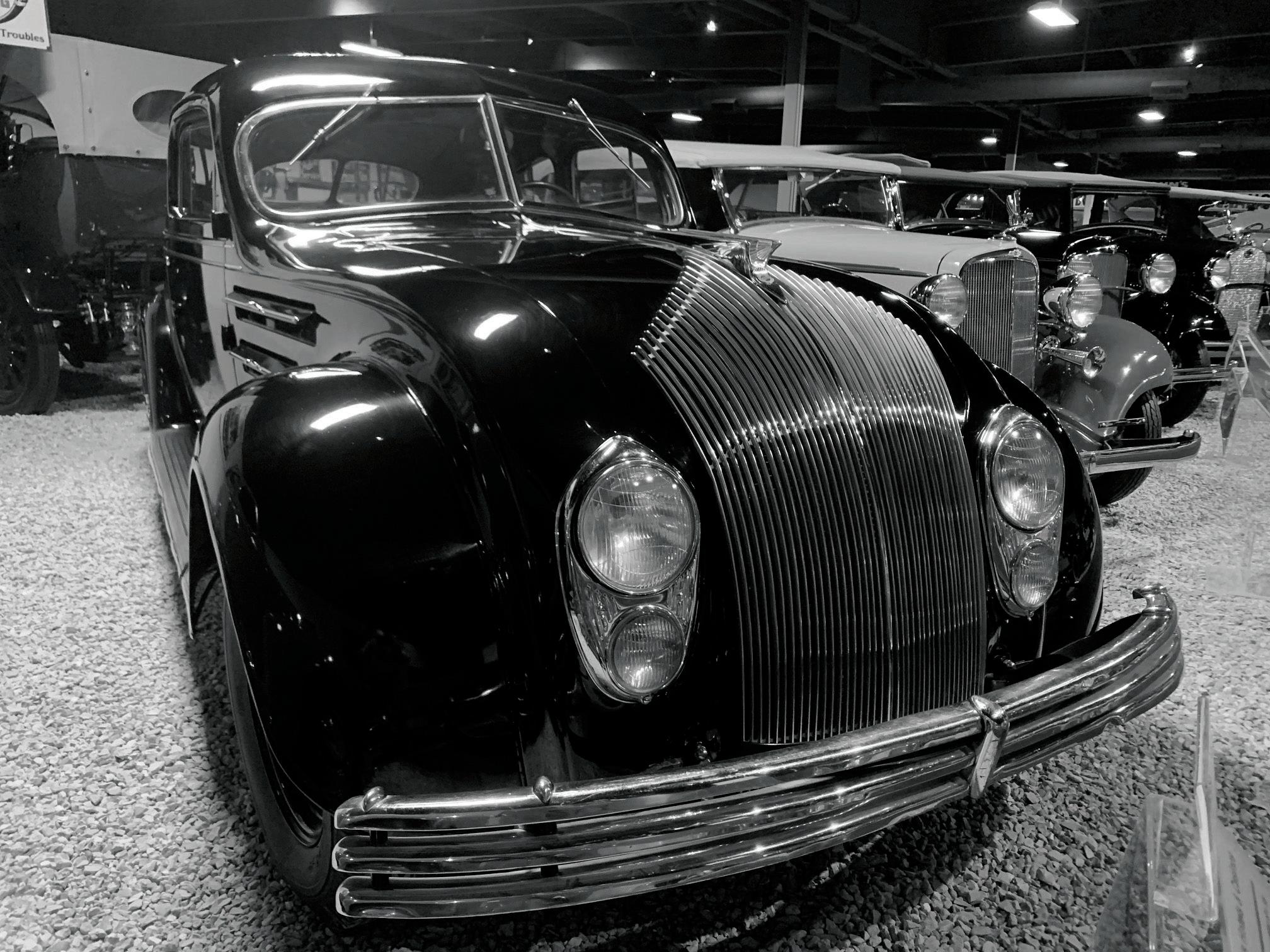
4 minute read
SECOND THURSDAY TALKS
On the second Thursday of each month, the Museum offers an entertaining presentation from 1:30 – 2 p.m., followed by refreshments and a chance to mingle with our speakers and Museum guests. Talks are included with admission, free to members and volunteers, otherwise, they are $5 per person. Reservations are not required.
Simply drop by every second Thursday.
Advertisement
JANUARY Winton and Packard, a Transcontinental Feud Part 1: A Rivalry is Born, 1898-1901 By Packard enthusiast Jim Chase
FEBRUARY Winton and Packard, A Transcontinental Feud Part 2: First from Sea to Sea: The Race that Wasn’t – or Was it? By Jim Chase
MARCH The Best Car in the World The Story of the Rolls-Royce Silver Ghost By Museum Docent John Sell
APRIL Henry Joy’s 1915 Road Trip Detroit to San Francisco in his Packard By historian Jim Bonar
MAY Gordon Buehrig The Designer of Classics By Museum Docent Norm Miller
JUNE The People’s Car The Amazing Story of the Volkswagen By Museum Docent Terry Nielsen JULY The Lunar Roving Vehicle The Most Innovative (and Expensive) Car Ever Built By Paul McFarlane
AUGUST The History of Ride-sharing From Hailing a Cab to Using Your App By Museum Docent John Sell
SEPTEMBER Topic – TBA
OCTOBER Edsel Ford President in name only By automotive historian Bill Cathey
NOVEMBER The Adventures of the Abernathy Brothers The Most Adventurous Kids in History By Museum Volunteer George Canavan
DECEMBER Henry Leland: Founder of Cadillac and Lincoln Inventor, Machinist, Engineer and Automotive Entrepreneur By Museum Docent Chair Rod Smith
By Buddy Frank

At the recent Consumer Electronics Show (CES) in Las Vegas, held January 6th through the 9th, vendors unveiled the latest in technology from robots that fetched toilet paper to prosthetic hands that respond to an amputee’s brain waves.
While automobiles are not the main focus of this show, there were some interesting ideas; including one that was a throwback to one of our Museum cars. Chrysler Fiat debuted a new concept car called the “2020 Airflow Vision.”. As you can see from the photos, the “Airflow” name has a lot to do with the shape that looks like it was sculpted in a wind tunnel. Every surface seems to have been molded to reduce drag and turbulence. While it looks futuristic, the ideas behind this test vehicle are really a throwback to an earlier Chrysler; a car made 86 years before: the 1934 “Airflow.”
Museum visitors may have noticed our black Airflow in Gallery Three. Like its newer, and much whiter namesake, the ’34 featured slick lines designed to cut through the air instead of blasting through it like all the upright radiators of the Fords and Chevys of the day.

According to a Chrysler company legend, one day engineer Carl Breer was watching what he took to be a flock of geese in flight. But as they approached he came to realize that what he was seeing wasn’t geese; he was observing a squadron of military aircraft on maneuvers. The story goes that if an airplane, or for that matter the bird, was shaped in such a way as to minimize wind resistance, could not the same principle be applied to cars?
CHRYSLER AIRFLOW COMEBACK
With Walter Chrysler’s blessing, work got under way on the development of a streamlined automobile. A wind tunnel was constructed at Dayton, Ohio, and there Breer and his engineering partners, Fred Zeder and Owen Skelton, undertook their research under a cloak of secrecy. By the end of 1932, a prototype was on the road known as the “Trifon Special.” There were several other innovations in the car with a radical new weight distribution of 45% in the front and 55% to the rear. They also positioned all the passengers within the axles, largely eliminating the bouncing sensation that had was standard for anyone sitting in the rear. That also made it possible to have wider and roomier, 50-inch-wide seats. 1934 CHRYSLER AIRFLOW FIVE-PASSENGER COUPE • It’s an innovative streamlined design, with aviation influences. • The strong “unit body” was promoted by a famous stunt of __driving it off a 100-foot cliff, where it landed on all four wheels __and was driven away. • While innovative, its design was ahead of its time and did not __appeal to the public. QUICK FACTS
The car was way ahead of its time when it debuted as a 1934 model. Unfortunately, it was too far ahead. The public hated it. Where were the upright radiators that were so popular in legends like the ‘32 deuce coupe? And, who wanted those rounded lines of the top that were nothing like the other roadsters of the mid-30s.
Sometimes it’s not good to be first.
STORY Big news for 1934 was the revolutionary Airflow unveiled in the Chrysler and DeSoto lines. Now considered one of the most influential cars of the 1930s, the Airflow was primarily the brain-child of Carl Breer, who put into it all of the most modern concepts of streamlined automotive and aviation designs. All Airflow bodies were constructed around a cage-like steel girder network, to which the body panels were welded. This “unit body” was so strong that, in a publicity stunt, an Airflow was driven off a 100-foot cliff, bounced down the cliff face, landed on all four wheels and was driven off under its own power. Barney Oldfield and his “Hell Drivers” thrilled millions and demonstrated the durability of the Airflow design at the Chicago World’s Fair. As innovative as it was, the Airflow was clearly ahead of public taste and was not a dramatic sales success. Chrysler Corporation Detroit, Michigan $1,245 8-Cylinder, 122 hp 3 1/4” 4 1/2” 298.6 Cu. In. BUILT BY PRICE WHEN NEW ENGINE BORE STROKE DISPLACEMENT










